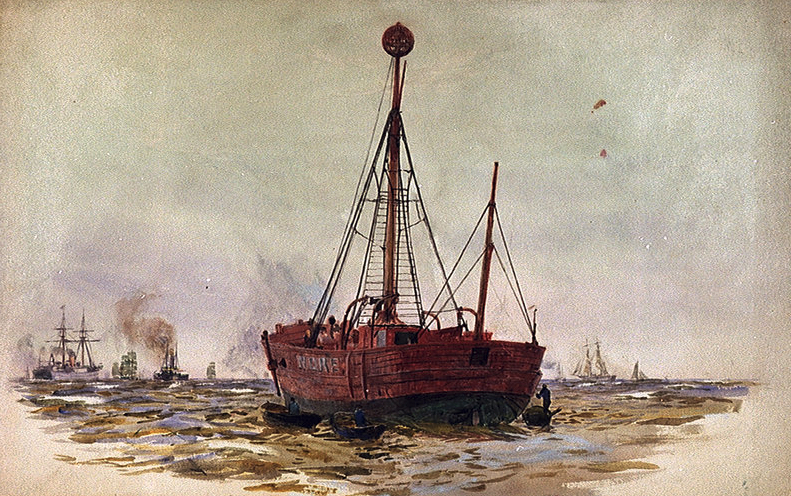The BYC Nore Race is a major public event organised since the 1920s by the club – the start and finish is off Southend Pier. Around 120 boats compete.
It is unique in welcoming almost any boat to join in, with the exception of windsurfers. The Prizegiving celebrates participation as much as achievement.
The Benfleet Yacht Club was founded in 1922 by the railway station and relocated to the Canvey side in the 1970s. BYC welcomes applications for membership.
Contact: Norerace@benfleetyachtclub.org
Pathé video of the race from 1963:
Brief history of the race: here
WEBSITE: http: www.benfleetyachtclub.org/NoreRace

The Nore is a sandbank at the mouth of the Thames. As a hazard to shipping it was marked by the world’s first lightship in 1732 in an experiment by Robert Hamblin – who patented the idea. The lightship’s station is now marked by Sea Reach No1 buoy, with various other buoys around the bank. The ship lay about three miles from the nearest point on the Kent coast and around the same distance from the Essex coast. Painting by Wm L Wyllie
The Nore gives its name to the anchorage, or open roadstead, used by the Royal Navy’s North Sea Fleet, and to the RN Command based there. It was the site of a notorious mutiny in 1797. The last lightship, LV86 – built in 1931 by J Samuel White of Cowes, Isle of Wight, was built for and stationed at the Nore until 1942. She was then stationed at various locations including Cork before being sold into private ownership. She was most recently listed at Hoo Marina on the Medway in Kent.

